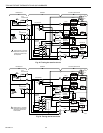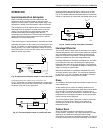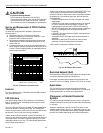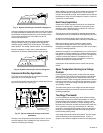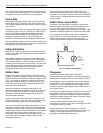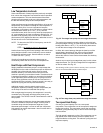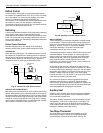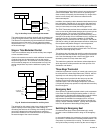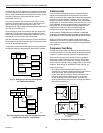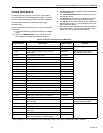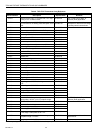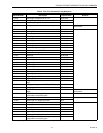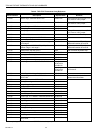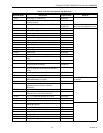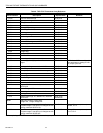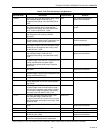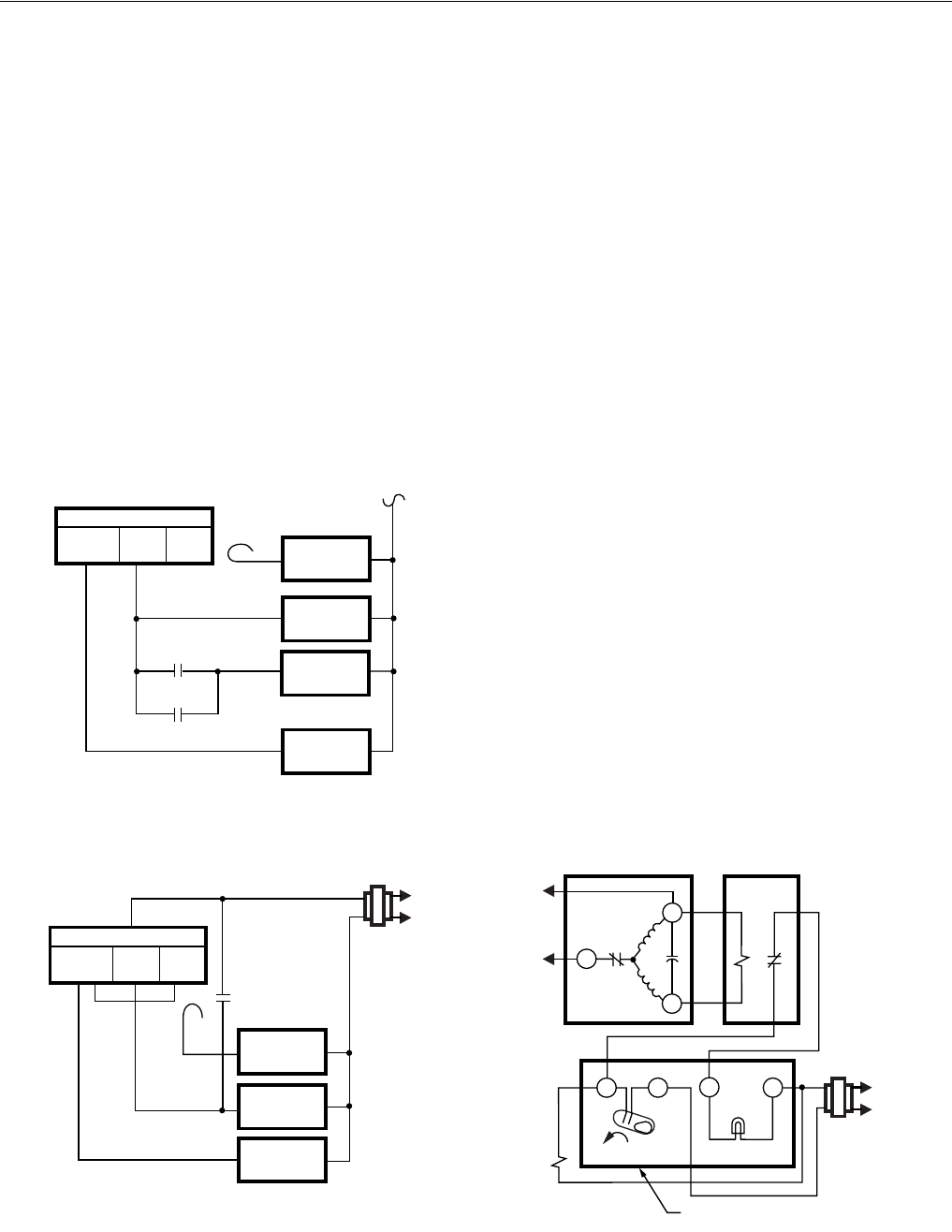
T874 MULTISTAGE THERMOSTATS AND Q674 SUBBASES
60-2485—8 28
the thermostat. A set of contacts on the emergency heat relay
is used to bypass each outdoor thermostat so that all electric
heat is under immediate thermostat stage-two control. So the
emergency heat relay simply bypasses the outdoor
thermostats. See Fig. 41.
In the second method, the emergency heat relay is cycled
directly by the thermostat mercury bulb. In this hookup, the
relay is controlled by the thermostat first stage. The
emergency heat relay energizes all of the auxiliary heat relays
on a call for heat. See Fig. 42.
So the emergency heat is controlled by the first stage of the
thermostat. The emergency heat relay energizes all of the
electric strip heaters so the heat and the indoor fan come on
together as soon as the first stage calls for heat.
With the first method, the fan remains on (being controlled by
the first stage of the thermostat) and the electric heaters cycle
on and off with the second stage.
In either case, a subbase indicator light is turned on whenever
the function switch is in the emergency heat (EM.HT.) position.
Fig. 41. Emergency heat relay that bypasses
the outdoor thermostats.
Fig. 42. Emergency heat relay that energizes all of the
auxiliary heat relays on a call for heat.
Crankcase Heat
In any mechanical refrigeration system, refrigerant tends to
migrate to the coldest part of the equipment and condense
there. In a heat pump, this coldest spot could be the compressor
because it is usually outdoors. In addition, the oil in the com-
pressor crankcase is capable of absorbing a high concentration
of refrigerant. On compressor startup, there are two risks: (1) the
liquid refrigerant, which is noncompressible, can be drawn into
the cylinder, and (2) considerable oil can be entrained in the
refrigerant and swept out of the crankcase through the
changeover valve and dispersed in the piping and coils.
So the migration of refrigerant to the crankcase is undesirable
because it can interfere with system lubrication and because the
liquid refrigerant must be kept from going through the compressor.
Adding a crankcase heater creates enough temperature
differential to prevent this migration because the compressor
is no longer the coldest part of the system so refrigerant does
not migrate to it.
Compressor Fault Relay
Another very simple method of detecting a compressor failure
has been developed. It uses the voltage developed across the
capacitor in a permanent split capacitor compressor motor.
The principle involved is that virtually all serious problems
reduce the voltage across the motor capacitor. By carefully
selecting the correct coil voltage, the normally closed relay
does not pull in unless the proper voltage builds up across the
capacitor, which brings on the SERVICE LED. See Fig. 43.
Here is how it works:
• On a call for cooling, the thermostat makes R to Y, the
contactor coil is powered, and the compressor motor turns on.
• At the same time, the indicator light is energized.
• As the motor gets up to speed—about one second, the
fault relay sees enough voltage to pull in. Its normally
closed contact opens and the indicator light goes out.
• Anything that prevents the motor from running prevents the
fault relay from pulling in.
Fig. 43. Compressor fault relay schematic.
M5833
COMPRESSOR
THERMOSTAT
FUNCTION
SWITCH
HEAT 2
HEAT 1
EMERGENCY HEAT
RELAY CONTACT
EMERGENCY
HEAT RELAY
AUXILIARY
HEAT RELAY 1
AUXILIARY
HEAT RELAY 2
OUTDOOR
THERMOSTAT
M583
2
COMPRESSOR
THERMOSTAT
FUNCTION
SWITCH
HEAT 2
HEAT 1
EMERGENCY
HEAT RELAY
CONTACT
24 V
EMERGENCY
HEAT RELAY
AUXILIARY
HEAT RELAY
RISE
L1
(HOT
)
L2
M5831
COMPRESSOR MOTOR
FAULT RELAY
YR
L
X
LED
CAP.
RUN
START
S
R
C
L1
L3
C
ONTACTOR
THERMOSTAT-
SUBBASE



